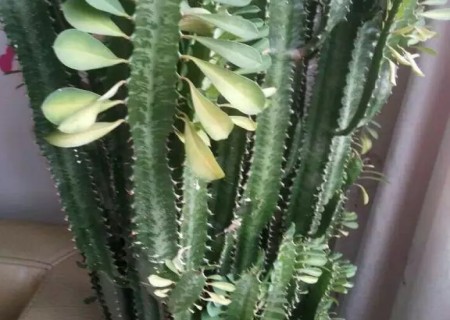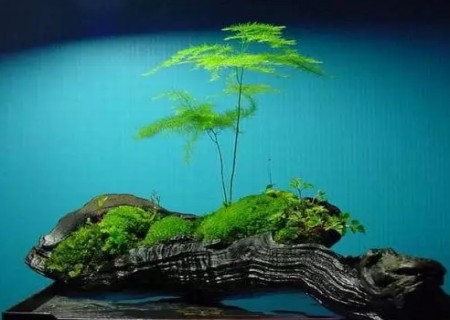Causes and control measures of yellowing of bonsai leaves of Sabina vulgaris
Sabina vulgaris, also known as Sabina vulgaris and Sabina vulgaris, is an evergreen shrub of the genus Sabina. The plant is low and has no erect trunk. The branches grow parallel to the ground or grow close to the ground. The trunk epidermis is smooth when young, and becomes rough during a period of growth. Its branchlets grow densely, leaves spiny, apex pointed, leaves about 0.8 cm long, three interactive whorls. The bonsai made with it has the characteristics of dense branches and leaves, green color, evergreen four seasons, clear hierarchy, chic posture and so on.
The branches and leaves of Sabina vulgaris are green and meandering, which are suitable for viewing in the four seasons, and the ornamental effect is the best when the tender green branches and leaves are born in spring. It is not suitable to keep indoors for a long time during the growing period. The cypress is easy to shape and can be made into a symmetrical bonsai, which can be placed in the courtyard or reception room for appreciation. Ground cypress is often planted in rock gardens or lawn corners in gardens, and it is also a good ground cover plant on gentle soil slopes. However, if there is improper management, cypress will appear leaf yellow phenomenon, mainly for the following reasons:

First, the reason of fertilizer and water
Although Sabina vulgaris is suitable for the growth of dry sand, if it is in the environment of dry soil and dry air for a long time, it is easy to appear the phenomenon of whitening and yellowing of the lower leaves of branches. If it is not grafted seedlings, especially those that do not use Platycladus orientalis as rootstocks, this situation is more likely to occur. Water should be properly watered until thoroughly. Sabina vulgaris requires a loose and permeable ecological environment. If the soil is too wet for a long time, the rotting roots will be caused by hypoxia, and ten pieces of Ⅱ will turn yellow, especially the new leaves. Watering should be controlled and the soil should be loosened and ventilated. Sometimes excessive fertilization can also cause leaf yellow, which should be controlled.
II. Diseases
Cypress rust pathogen filaments overwintered on cypresses and forwarded to begonia, Hawthorn, pears, apples and other Rosaceae plants. The disease mainly harms the needles and shoots of Sabina vulgaris. At the initial stage of the disease, orange-yellow, glossy small disease spots appeared in the leaves, and then gradually expanded, and there were needle-sized yellow spots on the disease spots. When the weather was wet, mucus was secreted on them, and the yellow spots turned black after drying, which is the sexual spore organ of the pathogen. In the coming year, it germinates in the rain and produces basidiospores, which are spread by the wind. In warm and rainy years in spring, the disease is serious. If there are sporadic yellow spots on twigs and leaves, it is generally the disease.
Prevention and control measures:
1. Cut off diseased branches in winter:
Spraying 0.3% pentachloro FENNA and 1 Baomedo stone sulfur mixture on Sabina vulgaris from October to November can prevent the infection of rust spores.
Spraying 1-2 Baomedo stone sulfur mixture or 160-200 Baumedo Bordeaux solution for 2-3 times every 7-10 days before winter spore germination in the middle and last ten days of March, the effect was better.
In addition, the tiled cypress appeared yellowing in a large area, no diseases and insect pests were found, and the soil was moderately dry and wet, which may be physiological yellowing of Sabina vulgaris. The symptom of chlorosis is that the leaves turn yellow at the initial stage, and then yellow and white, especially in the new leaves. In severe cases, leaf tissue necrosis affects normal photosynthesis, and then the whole plant will die slowly. Usually, there are more alkali in soil and water in the northern region, which affects the absorption of iron ions by plants, resulting in physiological iron deficiency in plants, resulting in chlorosis.
Prevention and control measures:
1. Ferrous sulfate can be mixed into fertilizer. Ferrous sulfate 2.5kg-3kg, oil meal 5kg-7.5kg, feces 10 kg-15 kg, water 200 kg-250 kg mixed, ripened into black, can be used.
2. Spraying 0.2 ‰ ferrous sulfate solution, both the front and back of the leaves were sprayed, once every 3 days for several times, so as to improve the yellowing of tender leaves.
III. Insect pests
If the cypress appears yellowing, after eliminating the disease, it may be harmed by stem borer (such as longicorn beetles). It is necessary to carefully examine the branches to see if there are defecation holes. Or break the withered and yellow branches to see if there are worms endangered by longicorn beetles.
Prevention and control measures:
1. Strengthen the maintenance and management of Sabina vulgaris in order to enhance the tree potential. Reduce the chance of pests to invade.
2. Use a syringe to inject 30-50 times 80% dichlorvos EC into the wormhole in the branches of Sabina vulgaris to kill larvae. Remove sawdust and insect dung from the insect track before injection, and seal the entrance with clay after injection.
3. If the insect pest is serious, it can be cleared and burned.
The cause of yellowing of Sabina vulgaris leaves is sometimes single, sometimes caused by a variety of reasons, which should be carefully analyzed, carefully diagnosed, and prescribe the right medicine.
[maintenance recommendations]
1. Watering: cypress likes to be moist, potted plants should be watered frequently, but should not be watered. When the weather is dry, you should often spray water on the leaves.
2. Fertilization: thin and mature organic fertilizer should be used. Light fertilizer and water should be applied 2-3 times each year from March to May in spring and from September to October in autumn.
3. Pruning: in the pruning of Sabina vulgaris, the lateral branches that do not need to be developed will be shortened in time before the new branches are produced in spring, so as to promote the extension of the main branches. The branches that affect the shape of the tree can also be cut off during the dormant period.
4. Turn the basin: it is appropriate to turn the basin every 3-4 years, and it is better to do it before the germination of early spring. When turning the basin, part of the old roots and old soil can be properly removed and replaced with fertile and loose culture soil to promote the growth and development of new roots, strong branches and leaves, and increase the ornamental effect of bonsai.
5. Placement: the cypress should be placed in a place with shade and high humidity, but it should be ventilated. It is best to place the bowl near the ground, bury it in the soil in winter, and spend the winter outdoors.
Time: 2019-05-30 Click:
- Prev

What is the matter with yellow leaves?
Dragon bone flower is a common flower plant, but familiar pot friends love and hate it. Love is mainly love it domineering and unique, hate is mainly hate it covered with thorns, the body also contains toxins. However, as a pot friend who likes to plant it in potted plants, love is naturally better than hate. The keel flower also has a great advantage.
- Next

How to raise bonsai moss
Moss in bonsai can play a good role in embellishment, and even let bonsai achieve the effect of icing on the cake. In the last article, the editor shared an article entitled "making Pictures of Bonsai Moss". I believe you already know how to make bonsai moss. Today
Related
- Fuxing push coffee new agricultural production and marketing class: lack of small-scale processing plants
- Jujube rice field leisure farm deep ploughing Yilan for five years to create a space for organic food and play
- Nongyu Farm-A trial of organic papaya for brave women with advanced technology
- Four points for attention in the prevention and control of diseases and insect pests of edible fungi
- How to add nutrient solution to Edible Fungi
- Is there any good way to control edible fungus mites?
- Open Inoculation Technology of Edible Fungi
- Is there any clever way to use fertilizer for edible fungus in winter?
- What agents are used to kill the pathogens of edible fungi in the mushroom shed?
- Rapid drying of Edible Fungi

